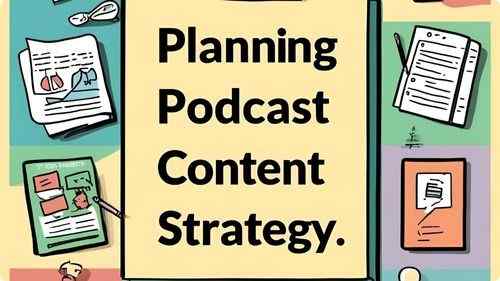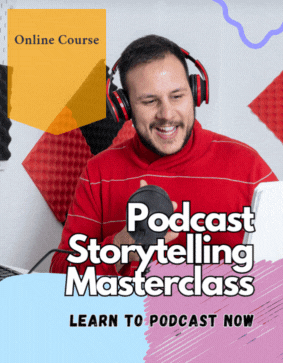The Easiest Way To Make A Podcast Ever
609,798 View
Share this Video
- Publish Date:
- May 25, 2025
- Category:
- Podcasting
- Video License
- Standard License
- Imported From:
- Youtube
Tags
If you have an iPad and you've been wanting to start a podcast, this video will show you how to start today.
Listen to my podcast: http://pod.link/topcomment
Buy the RODE NT-USB Mini: https://geni.us/rodemicpt (amazon affiliate)
Music from Musicbed:
http://share.mscbd.fm/impatrickt (ambassador link)
My favourite camera gear:
https://moment.8ocm68.net/ptfujixt4t (affiliate link)
Edited and graded with FCPX and FilmConvert Pro
Follow me on Instagram: http://instagram.com/impatrickt My favourite lights: http://aputure.com?aff=9 (affiliate link)
-----------------------------------------
Podcasting Success Strategies: Get Podcast Sponsorships
If you're podcasting and not tapping into sponsorship opportunities, you're leaving serious money on the table. With Podcasting Success Strategies: Get Podcast Sponsorships, you'll learn how to attract sponsors, build profitable alliances, and monetize your podcast like the pros.
💡 Inside this course, you’ll discover:
- How to find and approach sponsors—corporations, associations, foundations, and even individuals with marketing budgets.
- Strategies to leverage partnerships for paid promotion, brand credibility, and explosive audience growth.
- Why podcast sponsorship is one of the most underrated income streams for content creators.
- Techniques to position your podcast for high-profile guests and corporate endorsements.
- Real examples of how podcast sponsorships have created massive traction and influence.
You’ll also gain insights into how sponsorships can explode your visibility, build trust with your audience, and bring real ROI—without relying solely on ads or product sales.
🔥 Sponsorships are big business, and podcasts are the next frontier. Ready to get your piece of the pie?
👉 Enroll now and unlock the playbook for podcast sponsorship success!
3 Must-Know Podcasting Tips for Your Show
Monetizing Your Podcast Effectively

Monetizing your podcast can turn your passion into a sustainable venture. Explore various revenue streams such as sponsorships, where companies pay to have their products or services featured in your episodes. Implement affiliate marketing by promoting products and earning a commission on sales generated through your unique links. Offer premium content or exclusive episodes through subscription models or platforms like Patreon. Additionally, consider selling merchandise related to your podcast to your loyal audience. Hosting live events or offering consulting services can also provide income opportunities. Diversifying your monetization strategies ensures a steady revenue flow while maintaining the quality and integrity of your content.
Planning Your Podcast Content Strategy

A well-defined content strategy ensures that your podcast remains focused, relevant, and engaging over time. Start by identifying your target audience and understanding their interests, preferences, and challenges. Develop a content calendar that outlines episode topics, guest appearances, and key themes you wish to explore each month. Balance evergreen content that remains relevant over time with timely topics that address current trends or events in your industry. Incorporate a mix of formats, such as interviews, solo episodes, and panel discussions, to keep your content varied and appealing. Regularly review and adjust your strategy based on listener feedback and performance metrics to maintain the effectiveness and appeal of your podcast.
Crafting Compelling Podcast Introductions

Your podcast introduction sets the tone for each episode and captures the listener’s attention from the start. Begin with a brief and impactful summary of the episode’s topic to inform your audience about what to expect. Use a consistent musical theme or jingle to create brand recognition. Introduce yourself and any co-hosts clearly, establishing a personal connection with your listeners. Incorporate a hook, such as a provocative question or an interesting fact, to pique curiosity. A well-crafted introduction not only engages listeners but also reinforces your podcast’s identity and purpose, encouraging them to continue listening.
Frequently Asked Questions
What are the common mistakes to avoid in podcasting?
Avoid inconsistent publishing schedules, poor audio quality, lack of preparation, overlong episodes, and neglecting audience engagement. Maintaining professionalism is essential for growth.
What role do podcast covers and branding play?
Visual elements like podcast covers and branding are crucial for making a strong first impression, attracting potential listeners, and conveying the essence of your show effectively.
How do I engage with my podcast audience?
Respond to listener feedback, encourage comments and questions, create interactive content, and build a community through social media or dedicated platforms to foster a loyal listener base.
Statistics
- About 55% of podcasters use interviews as a key strategy to provide diverse content.
- Listener reviews and ratings contribute to a 25% increase in podcast discoverability.
- Podcasts with eye-catching cover art are 45% more likely to attract new listeners.
- Collaborating with other podcasters can lead to a 20% growth in listener base.
- Podcasts utilizing video snippets on social media experience a 20% rise in audience interaction.
- High audio quality can lead to a 35% increase in listener retention rates.
- Podcasts that engage with their audience through email newsletters see a 30% higher retention rate.
- Guest appearances on podcasts can result in a 15% increase in subscriber numbers.
- Listeners are 50% more likely to subscribe to podcasts that offer regular episode releases.
- Engaging storytelling techniques can increase listener retention rates by up to 50%.
- Using transcription services can make podcasts accessible to a wider audience, increasing reach by up to 25%.
- Genres such as true crime, technology, and personal development are among the most popular, attracting over 70% of listeners.
- Podcasts that regularly update their equipment report a 40% improvement in audio quality and listener satisfaction.
- Podcasts that offer unique and niche content are 35% more likely to build a dedicated listener base.
- Investing time in marketing can increase a podcast’s audience by up to 50% annually.
- About 60% of podcasters find that offering premium content subscriptions generates additional revenue.
External Links
shutterstock.com
podbean.com
screencast-o-matic.com
podcastcareers.com
ahrefs.com
thepodcasthost.com
canva.com
adobe.com
convinceandconvert.com
apple.com
podcastmovement.com
mailchimp.com
podcasters.spotify.com
help.apple.com
buzzsprout.com
jeffbullas.com
blog.libsyn.com
How To
How To Handle Technical Issues During Podcast Recording
Technical issues can disrupt your podcast recording, but with proper preparation, you can minimize their impact. Before recording, test all your equipment, including microphones, headphones, and software, to ensure everything is functioning correctly. Have backup solutions in place, such as an extra microphone or a secondary recording device, in case of equipment failure. Familiarize yourself with troubleshooting common problems, such as audio glitches or software crashes, to address them quickly. Maintain a stable internet connection if recording remotely and consider using wired connections to reduce the risk of dropouts. Additionally, keep your software updated and regularly perform maintenance on your equipment to prevent unexpected issues during recording sessions.















